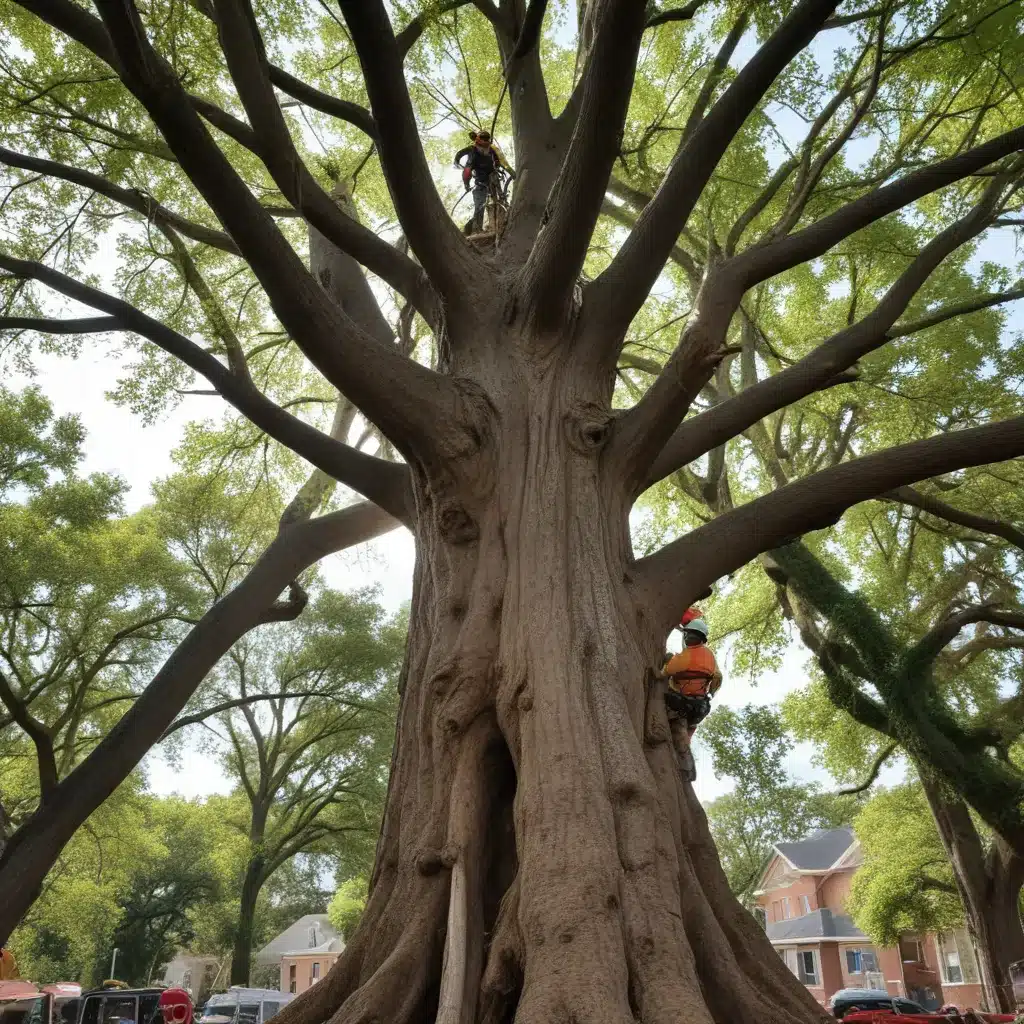
The management of urban tree canopies poses a delicate challenge, particularly when the preservation of historic sites is a competing priority. As a tree care specialist for TriCounty Tree Care, I am tasked with navigating this nuanced terrain, weighing the ecological advantages of trees against the significance of safeguarding our community’s heritage.
Tree Removal: Necessity and Impact
Tree removal is often a complex decision, driven by a variety of factors. From public safety concerns to infrastructure maintenance, there are instances where the removal of a tree becomes a necessary course of action. However, the environmental impact of such decisions cannot be overlooked.
Reasons for Tree Removal
Trees may require removal due to disease, structural instability, or interference with utility lines or building foundations. In some cases, the construction of new developments necessitates the clearing of existing vegetation to accommodate growth. While these decisions are not made lightly, they must be balanced against the broader ecological considerations.
Environmental Impact of Tree Removal
The loss of trees can have a significant impact on the local ecosystem. Trees play a vital role in carbon sequestration, air purification, and stormwater management. Their removal can disrupt the delicate balance of urban habitats, affecting wildlife populations and contributing to the urban heat island effect.
Regulations and Permits
In recognition of the importance of urban forests, many municipalities have implemented regulations and permitting processes to govern tree removal. The Bend City Council, for example, has adopted new rules to balance the need for housing production and natural resource preservation. These regulations outline clear criteria for tree preservation, mitigation, and the discretionary approval of removals.
Historic Preservation: Safeguarding the Past
Alongside the management of urban tree canopies, the preservation of historic sites is a crucial aspect of community stewardship. These landmarks serve as tangible connections to our shared history, shaping our collective identity and cultural heritage.
Significance of Historic Sites
Historic sites can encompass a wide range of structures, landscapes, and archaeological resources. They may be associated with significant events, influential individuals, or represent architectural styles that reflect the evolution of a community. The preservation of these sites is not only a matter of historical significance but also a means of fostering community pride and educational opportunities.
Preservation Techniques
The preservation of historic sites often involves a combination of stabilization, restoration, and adaptive reuse strategies. Stabilization measures aim to arrest deterioration and maintain the structural integrity of a site, while restoration efforts seek to return the site to a specific historic period. Adaptive reuse, on the other hand, involves the repurposing of historic structures to meet contemporary needs, striking a balance between preservation and pragmatic considerations.
Community Engagement
Successful historic preservation initiatives often rely on strong community engagement and support. By involving local stakeholders, preservationists can garner a deeper understanding of the site’s significance and build a coalition of advocates to champion its protection.
Balancing Priorities: A Delicate Equilibrium
When the need for tree removal and the imperative of historic preservation intersect, a careful balance must be struck to address the diverse interests and concerns of the community.
Assessing Risks and Benefits
The decision-making process should involve a thorough assessment of the risks and benefits associated with both tree removal and historic preservation. This evaluation should consider the ecological, cultural, and economic implications of each course of action, seeking to minimize the negative impacts while maximizing the positive outcomes.
Stakeholder Perspectives
Engaging with a wide range of stakeholders, including local residents, community organizations, and subject matter experts, is essential in navigating this complex issue. By incorporating diverse perspectives, decision-makers can develop a more comprehensive understanding of the tradeoffs and identify innovative solutions that balance the various priorities.
Decision-Making Frameworks
The Advisory Council on Historic Preservation and the California Office of Historic Preservation have established frameworks to guide the decision-making process when historic resources are at risk. These frameworks emphasize the importance of thorough documentation, impact assessment, and the exploration of alternatives to minimize harm to historic sites.
Urban Planning Considerations
The challenge of balancing tree removal and historic preservation extends beyond individual site-level decisions, encompassing broader urban planning strategies and sustainability initiatives.
Land Use and Development
The integration of tree preservation and historic site protection into land use planning and development processes is crucial. TriCounty Tree Care advocates for the adoption of clear, objective standards that prioritize the retention of mature trees and the safeguarding of historic resources, as exemplified by the recent amendments to the Bend Development Code.
Sustainability Initiatives
Incorporating sustainability principles into urban planning can help reconcile the competing priorities of tree preservation and historic preservation. Strategies such as adaptive reuse, renewable energy integration, and stormwater management can enhance the environmental performance of historic sites, reducing the pressure to remove trees for the sake of modernization.
Public Space Design
The design of public spaces, including parks, plazas, and streetscapes, presents an opportunity to harmonize the preservation of trees and historic features. By thoughtfully integrating these elements, urban planners can create vibrant, multifunctional public realms that celebrate the community’s natural and cultural heritage.
As a tree care specialist for TriCounty Tree Care, I recognize the inherent complexities in balancing the priorities of tree removal and historic preservation. However, through collaborative decision-making, evidence-based assessments, and a commitment to sustainability, it is possible to navigate this delicate equilibrium and safeguard the unique character of our communities. By embracing this holistic approach, we can ensure that the urban forest and our shared history thrive in harmony, creating a more resilient and enriching environment for all.


